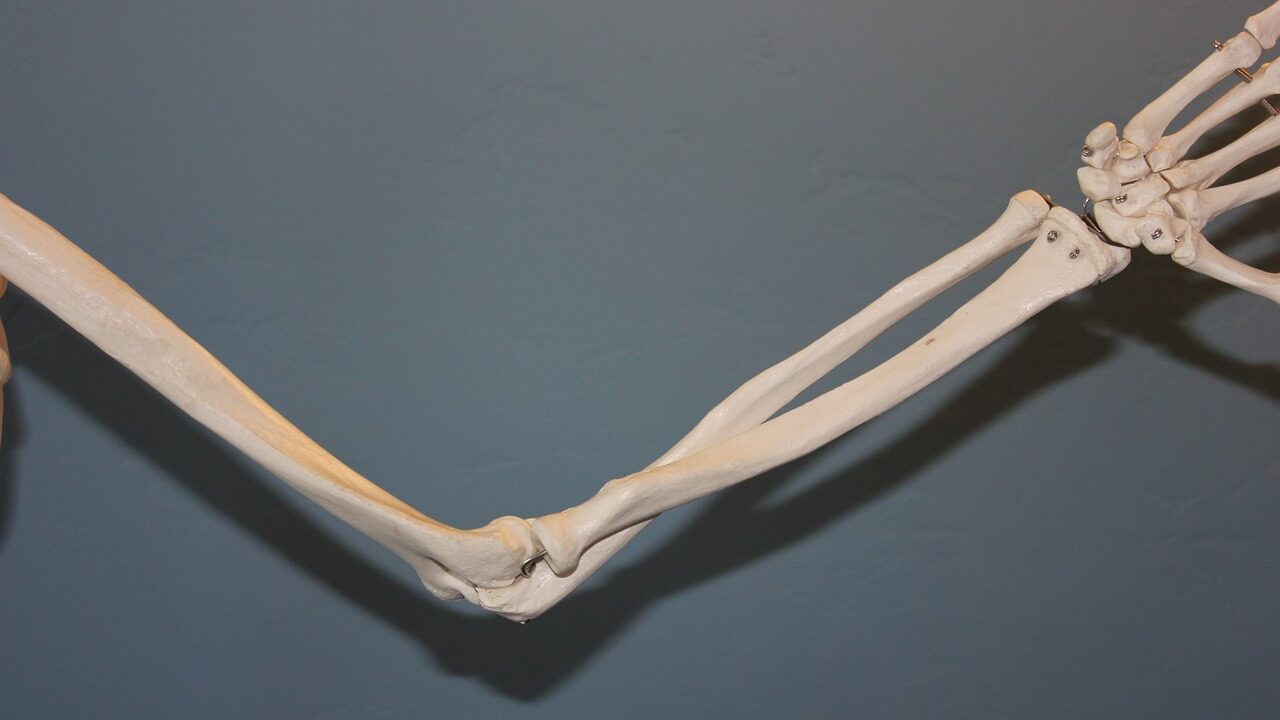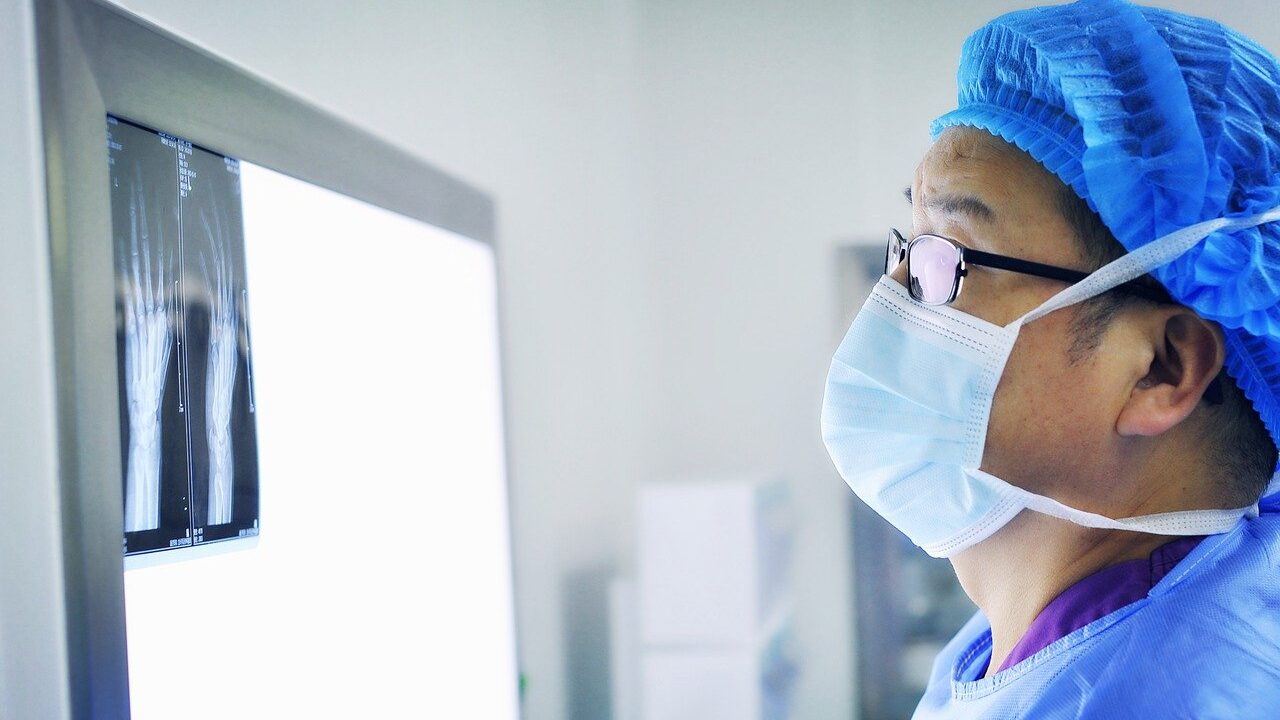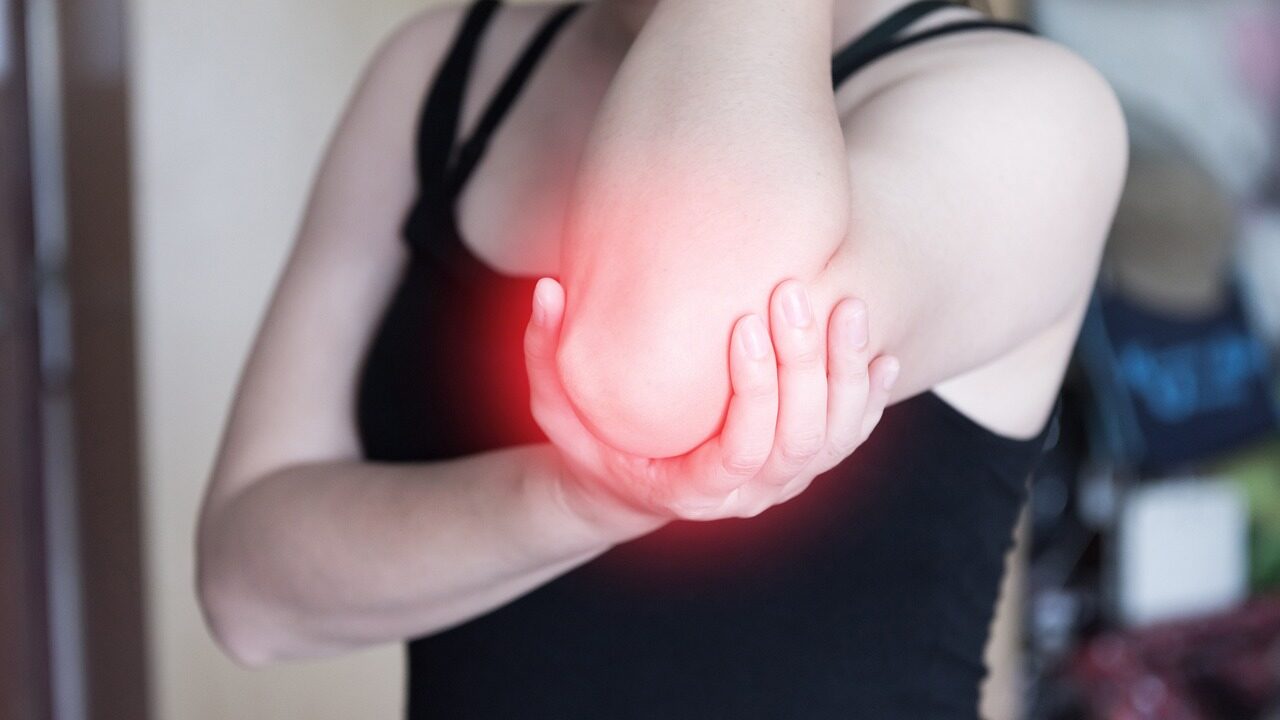Tennis elbow is an enthesopathy, a degenerative and inflammatory lesion of the muscle-tendon attachments. Lateral epicondyle syndrome of the humerus is characterized by overload lesions in the tendons of the wrist's extensor muscles. Tennis elbow manifests as pain in the elbow joint when the wrist is activated.
The tendons of the wrist extensor muscles initiate degenerative changes, most often resulting from repeated minor injuries targeting this area.
Usually, lateral epicondylitis syndrome is accompanied by impaired circulation, which impedes healing and inhibits regenerative capacity. Enthesopathy in the initial stage involves the tendon of the short wrist extensor muscle. In more advanced settings, the disease process may even extend to the initial attachment of the finger extensor muscle.
Tennis elbow is a condition that is associated with sports. Physically active people may be more prone to this type of injury. However, tennis elbow can affect each, regardless of gender or age.
The direct cause of tennis elbow is prolonged exposure to overload![]() and micro-injuries
and micro-injuries![]() that cause degenerative changes due to repeated, frequent damage to the collagen fibers that build the tendons. The body tries to cope by activating repair processes – previously damaged areas are replaced by connective tissue.
that cause degenerative changes due to repeated, frequent damage to the collagen fibers that build the tendons. The body tries to cope by activating repair processes – previously damaged areas are replaced by connective tissue.

It is accompanied by neovascularization, i.e., the formation of blood vessels in places where they usually do not exist or are different than in the physiological state, disrupting the proper blood supply. Calcifications are also formed. Such damage occurs most often as a result of, among other things, doing repeated movements of wrist straightening and rotation, lifting with the limb straightened at the elbow joint.
In conclusion, the build-up of micro-injuries can result from doing work and overexploitation of the upper limb during physical activity. Those who are exposed are mostly those doing constant wrist movements. Therefore, not only athletes but also office workers are at risk because of many work hours at the computer when the wrists are resting on the table and the hands are slightly raised. This unfavorable position can cause inflammation.

The unpleasant symptoms of tennis elbow most often appear in people between 30 and 50. Regardless of the cause, tennis elbow usually manifests as pain in the elbow area. In addition to this, there may be other characteristic symptoms. In the course of a golfer's elbow, in rare cases, the symptoms appear suddenly; more often, they increase in intensity over time. As the pain symptoms improve, they may interfere with daily activities. Symptoms can, therefore, include:
The main tennis elbow symptom is pain on the lateral aspect of the elbow. The pain can also radiate to different body parts, such as the wrist and forearm. Tennis elbow can make simple tasks challenging, like opening a door or lifting a cup. If you press on the affected area, you'll feel tenderness in the tissue. Using your hand repeatedly can maintain and even worsen the discomfort.
The pain is often most noticeable during hand movements or when trying to grip something tightly. Over time, the pain tends to increase gradually over weeks or even months. Pain on the side of the elbow does not necessarily mean that we are dealing with tennis elbow. Pain mimicking this ailment can have a very various source. Therefore, proper diagnosis is essential.

Additional characteristic symptoms often accompany pain in the elbow area. The pain co-occurs with swelling, warming, and redness. It is a typical symptom of inflammation. Swelling is the result of excessive fluid accumulation in the tissues.
On the other hand, when blood vessels in the skin dilate too quickly, redness may appear on the surface. In tennis elbow, increased temperature in the area of the inflamed elbow is also a common symptom. The skin in this area seems warmer, even hot.
Patients also have a weaker and unsteady grip and feel more fatigue in the limb. Great difficulty combined with muscle weakness and soreness with simple daily activities, such as grasping a doorknob, unscrewing jars, shaking hands in greeting, and rearranging a chair. The discomfort with advanced lesions involves the entire lateral compartment of the elbow joint.
Correct diagnosis of tennis elbow is essential, as pain symptoms can be confused with different types of injuries. To treat tennis elbow effectively, we need to be sure where the source of the problem is. For this goal, a history and specialized examinations are done. These belong to:

Palpation examination – It is a technique of analysis by touch. A manual review of the body's shells makes searching for particular anatomical structures possible. It is a valuable complement to the examination of the musculoskeletal system being carried out or to doing specific manual therapy techniques. The fundamentals of palpation are based on a solid theoretical knowledge of the topography of muscle attachments, muscle function, and joint structure.
Symptom intensity test – To assess how serious a condition is, helpful questionnaires are often used in the interview. One of these is the Patient-Rated Tennis Elbow Evaluation![]() . The test contains 15 questions to assess symptoms better. It is a reliable test that indicates the injury's severity level.
. The test contains 15 questions to assess symptoms better. It is a reliable test that indicates the injury's severity level.
Thomson Test – One of the functional tests used to confirm or rule out the presence of lateral compartment elbow pain syndrome is the Thomson Test![]() . Using a unique physiotherapy technique, the specialist provokes pain in the lateral epicondyle or on the course of the wrist extensor muscles. We speak of a positive result of the test in the appearance of pain during muscle tension. The test has a negative impact when the pressure of the wrist extensor muscles does not provoke any pain.
. Using a unique physiotherapy technique, the specialist provokes pain in the lateral epicondyle or on the course of the wrist extensor muscles. We speak of a positive result of the test in the appearance of pain during muscle tension. The test has a negative impact when the pressure of the wrist extensor muscles does not provoke any pain.
Cozen Test – The Cozen Test![]() is another physiotherapeutic method suitable for demonstrating the pain syndrome of the lateral compartment of the elbow joint, known as the tennis elbow symptom. When doing the test, it is essential to position the wrist's long radial extensor muscle and the wrist's short radial extensor muscle in the proper position. A positive test result is evidenced by the appearance of pain localized in the lateral epicondyle of the humerus or on the course of the wrist extensor muscles. We speak of a negative test result when the muscle tension does not cause any pain response.
is another physiotherapeutic method suitable for demonstrating the pain syndrome of the lateral compartment of the elbow joint, known as the tennis elbow symptom. When doing the test, it is essential to position the wrist's long radial extensor muscle and the wrist's short radial extensor muscle in the proper position. A positive test result is evidenced by the appearance of pain localized in the lateral epicondyle of the humerus or on the course of the wrist extensor muscles. We speak of a negative test result when the muscle tension does not cause any pain response.
Mill's test – One of the functional tests for the elbow joint, confirming or ruling out the presence of lateral compartment pain syndrome of the elbow joint, is also the Mill's Test![]() . The test is positive, indicating lateral compartment soreness syndrome of the elbow joint when complaints of pain when straightening the upper limb occur. By placing the short radial extensor muscle of the wrist and the long radial extensor muscle of the wrist in a position of maximum stretch, the specialist will provoke pain in case of disorders of these structures. A negative result is where the position does not cause any pain response.
. The test is positive, indicating lateral compartment soreness syndrome of the elbow joint when complaints of pain when straightening the upper limb occur. By placing the short radial extensor muscle of the wrist and the long radial extensor muscle of the wrist in a position of maximum stretch, the specialist will provoke pain in case of disorders of these structures. A negative result is where the position does not cause any pain response.
Ultrasound – Diagnostics can be expanded to include imaging studies, and ultrasound![]() is the most common and most helpful. The examination is non-invasive, safe, and painless. With it, you can assess the condition of the structures that make up the joint. The specialist checks the joint cavity, ligaments, tendons, and cartilage. Ultrasound is done in patients with both acute and chronic conditions. The examination can be performed in pregnant and breastfeeding women, as it does not use ionizing radiation. After the study, the patient can return to daily activities.
is the most common and most helpful. The examination is non-invasive, safe, and painless. With it, you can assess the condition of the structures that make up the joint. The specialist checks the joint cavity, ligaments, tendons, and cartilage. Ultrasound is done in patients with both acute and chronic conditions. The examination can be performed in pregnant and breastfeeding women, as it does not use ionizing radiation. After the study, the patient can return to daily activities.
X-rays – X-rays![]() can allow assessment of the late stage of the disease when calcification of the attachments is present. Advantages of this diagnostic method include short duration and easy availability. X-ray is painless, and it is possible to make clear the osteoarticular system of a selected body area, such as the elbow joint. The only contraindication that prevents an X-ray is pregnancy. It is permissible to perform different, safer imaging tests only where it is impossible to perform X-rays during pregnancy with caution.
can allow assessment of the late stage of the disease when calcification of the attachments is present. Advantages of this diagnostic method include short duration and easy availability. X-ray is painless, and it is possible to make clear the osteoarticular system of a selected body area, such as the elbow joint. The only contraindication that prevents an X-ray is pregnancy. It is permissible to perform different, safer imaging tests only where it is impossible to perform X-rays during pregnancy with caution.
MRI – MRI![]() is another reliable and precise diagnostic test. It offers high-resolution imaging of soft tissues, although it is not commonly utilized for diagnosing tennis elbow. One advantage of MRI is that it does not involve ionizing radiation, making it a safe and non-invasive option for evaluating the elbow. The main contraindication to doing an MRI, including the elbow, is the presence of electronic medical devices in the patient, such as a pacemaker, insulin pump, or neurostimulator. The magnetic field could interfere with their operation, which poses a threat to the patient's life. Before an elbow MRI, it is also necessary to inform the doctor about pregnancy or suspected pregnancy.
is another reliable and precise diagnostic test. It offers high-resolution imaging of soft tissues, although it is not commonly utilized for diagnosing tennis elbow. One advantage of MRI is that it does not involve ionizing radiation, making it a safe and non-invasive option for evaluating the elbow. The main contraindication to doing an MRI, including the elbow, is the presence of electronic medical devices in the patient, such as a pacemaker, insulin pump, or neurostimulator. The magnetic field could interfere with their operation, which poses a threat to the patient's life. Before an elbow MRI, it is also necessary to inform the doctor about pregnancy or suspected pregnancy.

Treatment of tennis elbow syndrome is based on the use of conservative measures. For lesions that are severely advanced, ineligible for such management, or when it is not practical, surgical procedures are considered. Although the condition is relatively common, no established management pathway exists – each case is treated individually.
The first and fundamental principle in the treatment process is rest and regeneration of the damaged tissue. If the strain occurs during physical activity or work, it is undoubtedly worth modifying these activities or bringing a break, thus allowing the damaged tissue to have conditions for healing. The last resort is surgery.
Treatment options for tennis elbow include:

Treatment for pain – In most cases, essential rehabilitation and painkillers are sufficient. Many people find ointments containing soothing substances helpful for elbow pain. To reduce symptoms such as swelling and discomfort, patients are prescribed paracetamol or non-steroidal anti-inflammatory drugs. Taking these medications for some time helps alleviate unpleasant symptoms.
Orthoses – You can also find specialized orthoses in the market that can help alleviate pain. These orthoses are made from materials that are friendly to the skin. For example, a tennis elbow brace is a stabilizing device that holds the joint in a fixed position, similar to a plaster cast. This helps prevent strain on the elbow. The duration for which the orthosis should be worn varies depending on individual factors such as healing ability, the type of injury, and recommendations from healthcare professionals.
Massages – One comprehensive treatment option for tennis elbow is manual therapy, specifically deep transverse massage or functional soft tissue massage. These techniques focus on restoring the natural mobility of the affected tissues and promoting faster healing while providing pain relief. Transverse massage done to affected areas aims to improve blood circulation and maintain normal mobility.
Glucocorticosteroid injections – A method that quickly stimulates the damaged tendon cells to regenerate is the injection of platelet-rich plasma containing growth factors. Preparation of platelet-rich plasma involves drawing blood from the patient and then centrifuging it to the appropriate fraction. It is a non-surgical medical procedure successfully used to treat pain associated with past injuries. Topical corticosteroid injectionshave their advantages and disadvantages. They eliminate pain and relieve inflammation very quickly. It often causes patients to return to activity too quickly, provoking further micro-injuries and strains.
Ultrasound therapy – Ultrasound therapy is a non-invasive and painless procedure that utilizes ultrasound waves to target specific areas of the body. These waves help stimulate tissue healing and promote natural repair processes. In addition, ultrasound therapy can provide analgesic (pain-relieving) effects and reduce inflammation. By directing the ultrasound wave through the skin, it reaches deeper structures within the body, ensuring a comprehensive treatment approach. The mechanically propagating vibration is called tissue micromassage, which stimulates repair processes and has an analgesic effect.
Shock wave therapy – A shock wave is a mechanical wave of low frequency. It is produced under high pressure in a very short period so that just after the application of the head, the wave penetrates through the skin to a depth of several centimeters, hitting the specific area affected. Shockwave therapy is a cutting-edge and safe rehabilitation method that effectively relieves chronic pain in ligaments, muscles, tendons, joint capsules, and bones. By utilizing high-energy waves, shockwave therapy not only provides pain relief but also helps heal degenerated tendon fragments with its analgesic properties.
Laser therapy – Laser therapy is a widely used treatment method in physical therapy that utilizes a low-power light beam to stimulate collagen production in tendons. This non-invasive and safe procedure has proven to be effective for both acute and chronic conditions, making it a popular choice in rehabilitation. Its beneficial effects on promoting healing and reducing pain have made it highly regarded within the medical field. Most often, a combination of various types of therapeutic procedures is used. The process can be used in children. However, it requires particular caution and adherence to all the procedures involved in escapement to laser light.
Radiofrequency Wave Therapy – Another minimally invasive treatment option for tennis elbow is radiofrequency wave therapy, also known as Topaz therapy![]() . This procedure involves inserting an electrode through a small incision in the skin and applying radiofrequency wave energy to the affected tissues. This stimulates the damaged tendon's regeneration processes, promoting healing.
. This procedure involves inserting an electrode through a small incision in the skin and applying radiofrequency wave energy to the affected tissues. This stimulates the damaged tendon's regeneration processes, promoting healing.
Magnet therapy – Magnet therapy is one of the more commonly used physical therapy methods. It involves using the therapeutic properties of magnetic fields, which penetrate deep into the affected tissues and mobilize them to regenerate. Treatments using magnetic fields are safe. Even over a very long period, treatment does not cause adverse consequences. However, it should be remembered that there is a possibility of exacerbation of ailments after the first few treatments, which pass with time.

Surgery – In more severe cases, surgery may be required as a treatment option for tennis elbow. After several months of conservative treatments with limited success, the effectiveness of the therapy is evaluated. If the patient continues to experience recurring or constant discomfort without improvement, surgical intervention should be considered. There are various surgical methods available for treating this condition. It can be an arthroscopic procedure to remove the affected soft tissues or an open process to release the joint extensor muscle of the fingers. The surgery is most often performed under general or regional anesthesia. There are no absolute specific contraindications for surgical treatment of tennis elbow. When qualifying patients for surgery, it is essential to remember that conservative treatment should be attempted. A patient's severe general condition posing an increased risk of surgery can be considered a contraindication.
Pain on the lateral side of the elbow does not necessarily mean that we are dealing with tennis elbow. The pains that mimic this ailment can have a very various source. Their origin can be in the cervical and thoracic spine or the upper thoracic opening. Pain to the elbow can also radiate from different soft structures. Therefore, the following conditions with similar symptoms are worth keeping in mind:

The elbow structure is sensitive to various strain types, causing inflammation. Widespread conditions are tennis elbow and golfer's elbow. Muscle enthesopathies are the classification for both tennis elbow and golfer's elbow. The difference lies in the location of the pain.
Golfer's elbow causes pain on the inside of the elbow, while tennis elbow brings about pain on the outside. Tennis elbow affects the wrist's extensor muscles, while golfer's elbow affects the flexor muscles of the wrist. These conditions result from repetitive microtrauma and an overload of soft tissues, typically due to prolonged and continuous muscle exertion.
This is a condition that is included in the group of compression neuropathies. Compressive neuropathies are diseases in which damage to a nerve is associated with its compression. The ulnar nerve conducts sensory impulses from the little and ring fingers and the lateral aspect of the hand and innervates the muscles of this part of the upper limb with movement.
The primary symptoms of ulnar nerve canal syndrome are unpleasant sensory sensations in the little and ring fingers. During the advanced stage of the disease, individuals may experience pain in the elbow joint area, especially at night. This can be accompanied by muscle atrophy.
Elbow bursitis occurs when the small space between tissues at the back of the elbow becomes inflamed. This swelling causes redness, pain, and an increase in fluid within the space. The symptoms of elbow bursitis include localized redness and swelling at the back of the elbow. Symptoms may be accompanied by pain and fever.
In most cases, patients experience pain in the elbow area, but not always. Sometimes, the lesion is not very painful. Rarely, inflammation of this bursa significantly limits the mobility of the elbow, but it can happen to restrict the straightening or bending of this joint.
Elbow degeneration is a degenerative change in the joints and surrounding tissues. Severe degeneration of the elbow joint can even cause loss of function. Osteoarthritis of the elbow joint involves premature wear and degeneration of the tissues that make up the joint. In the course of the disease, there is damage to the articular cartilage, bone remodeling with the formation of bony outgrowths, hardening of the subchondral layer, and the construction of subchondral cysts.
Elbow pain caused by rheumatism or joint degeneration usually appears in the morning and is very severe. At the beginning of the disease, elbow joint pain is often the earliest symptom. The discomfort is exacerbated when moving or putting weight on the joint and subsides or decreases after rest. Osteoarthritis usually manifests itself over the age of 60.
People in the risk group for tennis elbow should be careful not to expose themselves to inflammation. It is also essential for people who have healed tennis elbow. Following preventive instructions helps avoid recurrence. The following procedures are therefore recommended:

Warm-up before training – Including a warm-up as part of your workout routine is essential. It helps raise body temperature, improves flexibility and muscle efficiency, and also enhances the function of the circulatory and respiratory systems. By increasing heart rate, a warm-up prepares the body for more intense physical exertion. Moreover, proper warm-up can help prevent injuries like tennis elbow.
Gradual comeback to physical activity – In most patients, pain symptoms resolve entirely, and they can return to their previous level of physical activity. It is essential to increase training time and the amount of load gradually. You must keep it in mind because if the condition's cause is not eliminated, relapse can occur after conservative and surgical treatment.
The use of orthoses – Elbow joint stabilizers that support the joint's movements can help ensure that the condition does not relapse. For individuals who work in a sedentary position and have experienced sports injuries, accidents, or surgeries, utilizing tennis elbow braces, elbow stabilizers, or elbow tourniquets can be highly effective. These tools provide support to the injured joint, help prevent swelling and inflammation from occurring, and accelerate the recovery process.
Avoid overloading – Preventing Tennis elbow involves taking measures to prevent overloading the elbow joint and giving your muscles regular breaks to relax. It's also important to avoid heavy lifting and, if you work at a computer, consider using a wrist pad designed for working with a mouse to reduce tension on the tendons used during work. The correct workstation is a chair with a backrest and armrests that support the forearms so as not to put pressure on the ulnar nerve.

Tennis elbow is a condition that affects the tendons in the elbow area, specifically the extensor muscles of the wrist. It is characterized by degenerative and inflammatory damage to these muscle tendon attachments, known as enthesopathy. The primary cause of tennis elbow is prolonged exposure to overuse and repetitive strain on the tendons, leading to degenerative changes and micro-injuries in the collagen fibers.
The most common symptom of tennis elbow is pain in the elbow region, although other associated symptoms may also exist. Accurate diagnosis is essential since these pain symptoms can sometimes be mistaken for other injuries. To accurately diagnose tennis elbow, a comprehensive medical history and specialized examinations are usually performed.
Fortunately, conservative measures are usually effective in treating this condition. These measures include rest, applying ice or heat therapy, engaging in physical therapy exercises that focus on stretching and strengthening the affected muscles, using braces or straps for support during activities, and taking non-steroidal anti-inflammatory drugs (NSAIDs) to alleviate pain.
In more advanced cases where conservative treatments have not been successful or when there is severe tendon damage, surgical procedures might be considered as a treatment option. Individuals at risk of developing tennis elbow must take precautions to avoid inflammation. Additionally, those who have recovered from this condition should follow preventive measures outlined by medical professionals to minimize the chance of recurrence.